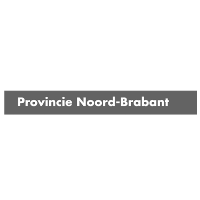Digital Twin solution for cycling policy
Cycling is seen as the sustainable alternative for short and medium distances. To increase bicycle use, the Dutch government is investing more and more in the bicycle network and bicycle use. But which investments achieve the best results? And how can you properly analyse and share those results? With our Digital Twin, you get all the relevant insights immediately.

These organisations are already using our digital twins








Our digital twin offers data-driven insight into
Our dashboard supports professionals by
A user-friendly online cycling policy tool
Connection to the local data platform
Data-driven insights into cycling network performance
Scalable use through access for all stakeholders
infrastructure
- Exact overview of cycle paths
- Locations of relevant objects such as traffic lights and thresholds
- Overview of relevant buildings/destinations such as stations, schools and businesses.
accessibility
- Bicycle accessibility of important locations such as stations and schools
- Number of (potential) users (CBS data) such as number of inhabitants and age structure
- Information on number of facilities within a certain travel time
bicycle network
- Information on the use of the bicycle network
- Overview of bottlenecks per area (district/neighbourhood)
- Understanding network speeds and delays
Cycle routes
- Interactive origin-destination analysis per road section
- route planner with fastest and shortest route
- Interactive route analysis in distance, travel time and detour factor
numbers of cyclists
- Visualisation of counting points
- Development of cycling behaviour on location
- Trend analyses of bicycle numbers per location

It is great that Dutch cycling knowledge and developed insights are linked within an application such as the Digital Twin, giving authorities direct insight into actual bicycle use. It also offers opportunities for in-depth policy questions and knowledge development.

This information helps us to weigh alternative routes and choose the most effective improvements.

With a data-driven approach, we have gained a better understanding of the opportunities for improving and expanding a high-quality bicycle network.






